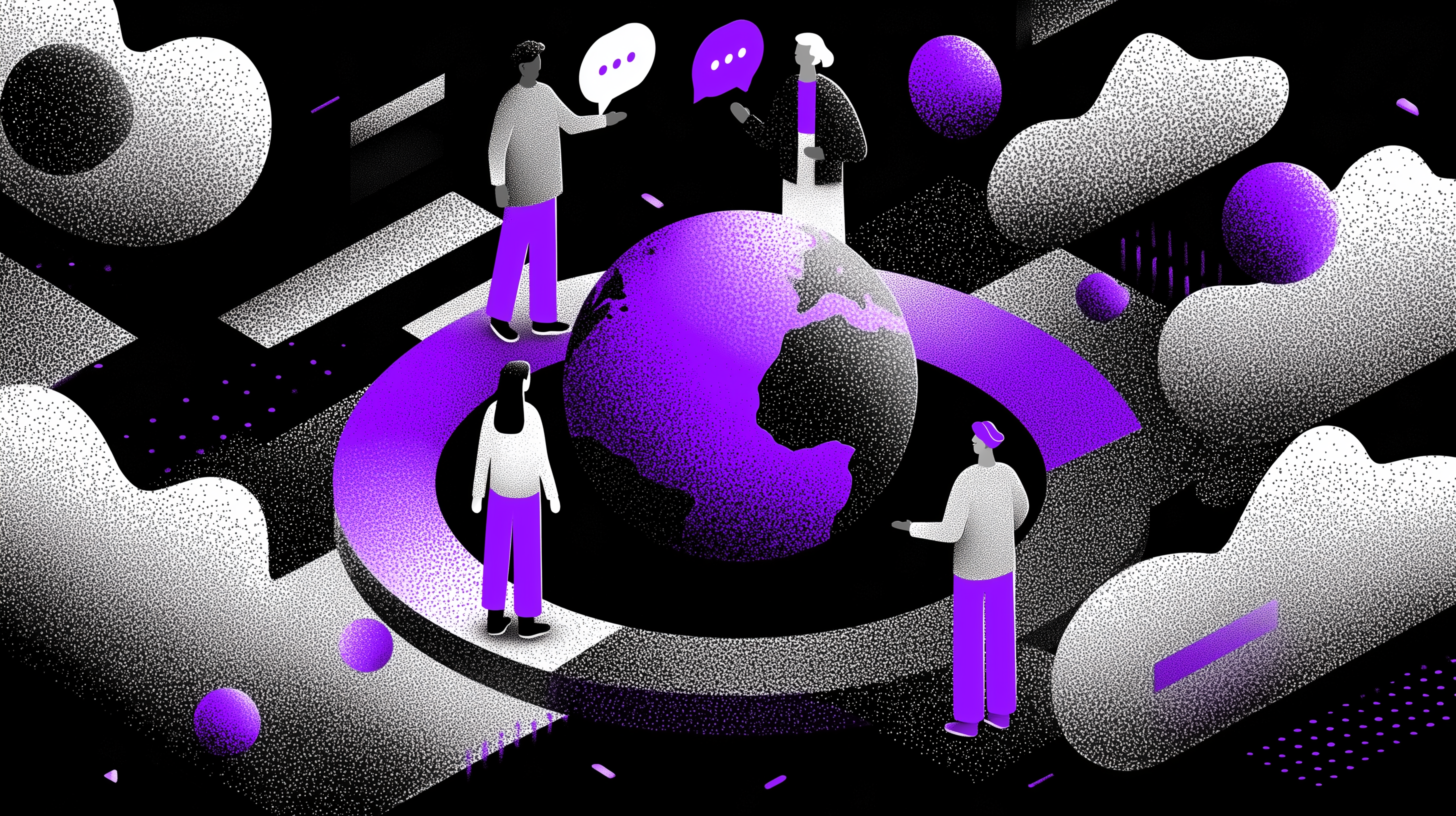AI and Multilingual Campaigns: How to Quickly Create Localized and Engaging Content

AI accelerates marketing localization: discover how to create multilingual content that is effective, fast, and tailored to each market."
The Rise of Marketing Localization
In 2025, international communication can no longer rely on simple translation. According to a CSA Research (2023) study, 76% of consumers prefer to buy products presented in their native language. For brands, this means that marketing localization adapting a message to the linguistic and cultural specificities of each market has become a key strategic lever.
The rise of generative artificial intelligence is accelerating this shift. It is now possible to quickly create multilingual content that is coherent, personalized, and engaging. The MTM platform perfectly illustrates this revolution by centralizing asset management, streamlining creative workflows, and optimizing campaign performance at a global scale.
Why Localization Is a Strategic Priority in 2025
The Evolution of International Marketing
For a long time, brands were content with translating their campaigns into several languages. But in an environment of fierce competition and hyper-connectivity, this approach is no longer sufficient. Consumers now expect messages adapted to their cultural references, linguistic codes, and purchasing habits.
Consumer Expectations for Multilingual Content
A CSA Research – Can’t Read, Won’t Buy report shows that over 40% of internet users never purchase from a website that is not available in their language. Multilingual marketing is therefore not a luxury, but a decisive factor for conversion and loyalty.
How AI Transforms the Creation of Multilingual Content
From Translation to Transcreation: A Paradigm Shift
For decades, marketing translation was limited to converting text from a source language into a target language. The result: messages that were linguistically correct, but rarely adapted to cultural nuances or the emotional expectations of the local audience.
This is where transcreation comes in: an approach that doesn’t just translate words but recreates the message to have the same impact in each market. This may involve adapting vocabulary, tone, cultural references, or even visuals.
Examples:
- A humorous campaign in France may need to be reformulated in Japan to preserve its essence while respecting local cultural codes.
- A slogan based on a pun in English is often untranslatable as is, requiring a creative rewrite to convey the same intent.
The Role of Generative AI in This Process
Generative AI changes the game: instead of simply providing literal translation, it can analyze the broader context, identify the intent behind the message, and propose a more natural localized version. Thanks to natural language processing (NLP), AI understands nuances of tone (formal, casual, humorous, inspirational) and adjusts the message accordingly.
It can also:
- Detect and adapt cultural nuances (avoid sensitive terms, favor local references).
- Maintain brand consistency by preserving the defined brand voice and style.
- Propose multiple variants of the same message so local teams can select the most impactful version.
A Concrete Example: International Campaign
Imagine a sports brand launching a global campaign built around the concept of “pushing your limits”:
- In English: “Push your limits.”
- In French, AI could suggest “Repoussez vos limites” or alternatives like “Au-delà de vos frontières” (“Beyond your boundaries”) for stronger inspiration.
- In Spanish, AI could generate “Supera tus límites”, while also suggesting a more emotional variant: “No hay barreras para ti” (“No barriers for you”).
This is no longer simple translation, but a creative adaptation powered by AI, then validated by local experts through collaborative workflows (such as those integrated into MTM).
The Concrete Benefits of AI for Marketing Localization
Speed and Cost Reduction
What once took weeks can now be done in days. AI, integrated into MTM, drastically reduces time-to-market and lowers production costs.
Cultural Personalization and User Engagement
AI adapts messages to specific local contexts: cultural references, lexical choices, or visual formats aligned with regional preferences. The result: a more immersive and engaging experience for each audience.
Scalability of Multi-Country Campaigns
One of MTM’s greatest strengths lies in its ability to orchestrate campaigns at scale. A brand can launch multiple variations of the same message in 10 or 20 countries simultaneously while maintaining global brand consistency.
Best Practices for Running Successful Multilingual Campaigns with AI
Combining AI with Human Expertise
AI accelerates production, but human validation remains essential. With MTM, local experts directly participate in workflows, ensuring optimal contextualization.
Defining a Market-Specific Content Strategy
Each country has its own marketing priorities. AI can quickly generate variations, but strategy dictates the tone, channel, and type of content to use.
Measuring and Optimizing Performance
AI-powered analytics integrated into MTM provide detailed visibility into campaign effectiveness: engagement rates, ROI, and language preferences. These insights allow continuous optimization and greater impact in future campaigns.
MTM: Seamless Integration of Multilingual Workflows
The MTM platform offers a unique competitive advantage:
- Centralization of creative assets (texts, videos, images) in a single library.
- Creation of collaborative multilingual workflows, involving translators, creatives, and marketing managers.
- Generation and monitoring of review links to quickly validate localized versions.
Collaborative Quality Control
With MTM, AI does not operate in isolation: it is embedded in a process where local teams can adjust, refine, and validate proposals, ensuring the perfect balance between technological speed and cultural relevance.
Conclusion: AI as a Catalyst for International Marketing
AI is profoundly transforming how brands approach multilingual campaigns. By facilitating transcreation, reducing production times, and enabling large-scale cultural personalization, it paves the way for more effective and inclusive global marketing.
The MTM platform positions itself as a central actor in this transformation, providing companies with a robust infrastructure to orchestrate, localize, and analyze multilingual campaigns.
AI does not replace human expertise: it acts as a catalyst, enabling marketing teams to focus on what they do best creating meaning and value.
FAQ
1. What is AI-powered marketing content localization?
It is the adaptation of content into multiple languages with AI, taking into account cultural and contextual specificities of each market.
2. What is the difference between translation and transcreation?
Translation conveys words, while transcreation adapts tone, references, and style to resonate with the target audience.
3. What are the best AI tools for marketing localization?
The MTM platform stands out with its integrated asset management, collaborative workflows, and AI analytics.
4. Can AI replace human translators?
No, AI accelerates production but human experts remain essential to ensure cultural and emotional relevance.
5. How can I measure the effectiveness of a multilingual campaign?
With integrated analytics (such as those in MTM), tracking engagement rates, conversions, and ROI across markets.
Sources
Other Posts

Practical Guide: 8 Project Management Mistakes to Avoid for a Successful Collaborative Workflow

The Complete 2025 Guide: 5 Steps to Launch, Monitor, and Close a Successful Marketing Project

